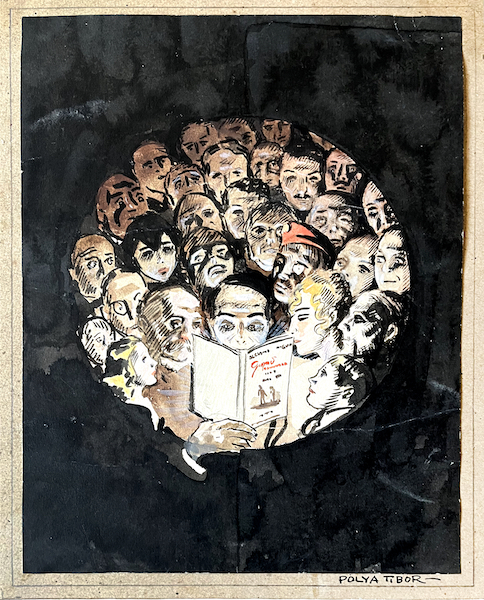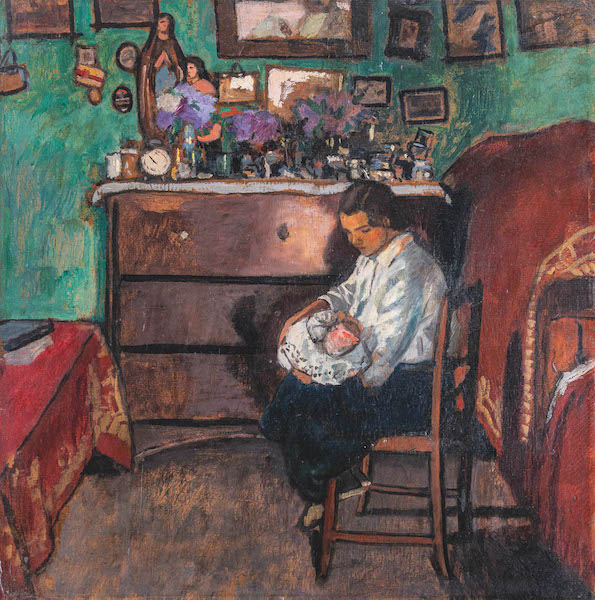Biography
Hungarian painter, caricaturist, graphic artist, one of the leaders of the artist colony in Szolnok.
He completed his high school in Szolnok, then went to an applied arts school in Budapest, where his teachers, László Gyalus, the interior design teacher, and Sándor Papp, the painting teacher, choked off him over time. The failure did not discourage him, and the following year he was admitted to the model drawing school in Budapest, where his teacher was Tivadar Zemplényi. The summer he spent with Fényes Adolf in Szolnok gave him inspiration, and he went to Munich to train. His first drawings appeared in the columns of the German newspaper "Fliegende Blätter". He soon worked for several newspapers in Germany. In time, he returned to Hungary, initially working in Szolnok, then became a member of the Kecskemét artist colony (1912–1919), and later moved to Budapest.
Neo-impressionism, a movement he loved so much, lured him to Paris, where he tested himself by practicing the visual directorial principles of several trends he had learned there. The war put an end to the free life in Paris. As a resident of an enemy country, he had to leave the French capital.
His work covers a wide range. In addition to his landscapes, portraits, lowland genre paintings, and nude paintings, he is a constant creative partner with caricatures of numerous Hungarian newspapers of the time. He makes etchings, works for the world of theater: he designs and paints sets, he made murals, he has a lot of book illustrations to his name and he makes lithographic sheets. His drawings appeared regularly in the columns of the major newspapers of the time, among others, his works appeared in Új Idők (1924–1926), Művészet (1938), Nyugat, Tolnai Világlapja (1929–1931), Vasárnapi Újság (1911–1914), Új Nemzedék (1918), in the columns of Kis Krónika (1919). He became the art director of Magyar Magazin, a sophisticated weekly newspaper (1928–1930), but also worked as a photo editor and art director in the editorial offices of Új Magazin (1933–1938), Pesti Hírlap Vasárnap (1931–1938), and Képes Vasárnap (1937), and for a long time he was a colleague of the editorial office of Színházi Élet led by Sándor Incze (1919–1934).
As one of the fastest working graphic artists of the era, he was a very prolific creative artist. His graphic works are characterized by simple lines and to-the-point depiction, but in addition to all this, his figures are lovely and drawn with great love. He gained fame primarily with his caricatures. He regularly worked for, among others, Fidibusz (1907–1913), Jankó Borsszem (1913–1925), Bolond Istók (1918), and the witty "Újság" (1922–1933) joke paper. He was a member of the Association of Hungarian Newspaper Cartoonists.
Between 1917 and 1924, he organized a collective exhibition for contemporary painters in the Ernst Museum almost every year, in which he himself participated. In 1928, he visited America, New York, in connection with the unveiling of the Kossuth statue, and published an album about the trip of the 500-member delegation. He published his personal experiences in a volume, which was first published in 1918 under the title "Among Writers and Artists". He was an esteemed member and artist of the renowned Herman Lipót Asztaltársaság, and was also a member of the Szinyei Társaság. He was a member of the Szolnok artist colony (1930s) and eventually became one of its leaders.


